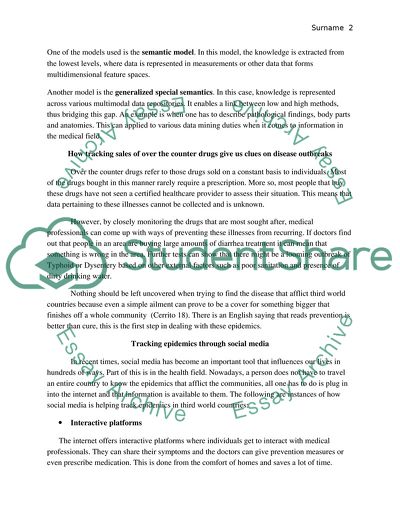Cite this document
(Prevention of Epidemics in Third World Countries Using Data Mining Coursework Example | Topics and Well Written Essays - 2000 words, n.d.)
Prevention of Epidemics in Third World Countries Using Data Mining Coursework Example | Topics and Well Written Essays - 2000 words. https://studentshare.org/information-technology/1814463-using-data-mining-to-predict-epidemics-before-they-spread
Prevention of Epidemics in Third World Countries Using Data Mining Coursework Example | Topics and Well Written Essays - 2000 words. https://studentshare.org/information-technology/1814463-using-data-mining-to-predict-epidemics-before-they-spread
(Prevention of Epidemics in Third World Countries Using Data Mining Coursework Example | Topics and Well Written Essays - 2000 Words)
Prevention of Epidemics in Third World Countries Using Data Mining Coursework Example | Topics and Well Written Essays - 2000 Words. https://studentshare.org/information-technology/1814463-using-data-mining-to-predict-epidemics-before-they-spread.
Prevention of Epidemics in Third World Countries Using Data Mining Coursework Example | Topics and Well Written Essays - 2000 Words. https://studentshare.org/information-technology/1814463-using-data-mining-to-predict-epidemics-before-they-spread.
“Prevention of Epidemics in Third World Countries Using Data Mining Coursework Example | Topics and Well Written Essays - 2000 Words”. https://studentshare.org/information-technology/1814463-using-data-mining-to-predict-epidemics-before-they-spread.


